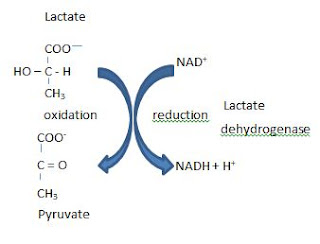Introduction
The living system required energy to keep their biological activities and sustain. Bioenergetics or biochemical thermodynamics is the study of energy changes accompanying biochemical reactions within the organisms. The reactions are accompanied by liberation of energy as the reacting system move from higher to lower energy level. Most frequently, the energy is liberated in the from of heat. In non-biologic systems, heat energy may be transformed into mechanical of electrical energy. Since biological systems are essentially exothermic, no direct use can be made of heat liberated in biological reactions to drive the vital processes that require energy. These reactions - synthetic reactions, muscular contraction, nerve conduction, and active transport, obtain energy by chemical linkage or coupling to oxidation reactions (Image 1.1 ).
Coupling of oxidation and reduction reactions
The conversion of metabolite A to metabolite B occurs with release of energy. It is coupled to another reaction, in which energy is required to convert metabolite C to metabolite D. As some of the energy liberated in the degradative reaction is transformed to the synthetic reaction in a form of other than heat, the normal chemical terms exothermic and endothermic can not be applied to these reactions. Rather, the terms exogonic and endogonic are use to indicate that a process is accompanied by loss or gain, respectively, of free energy, regardless of the form of energy involved. In practice, and endogonic process can not exist independently, but must be coupled exogonic / endogonic system where the overall net change is exogonic.









0 comments: